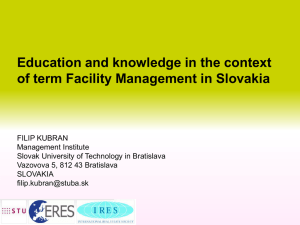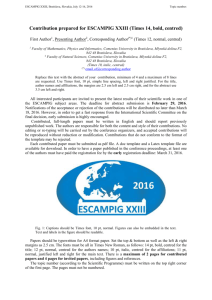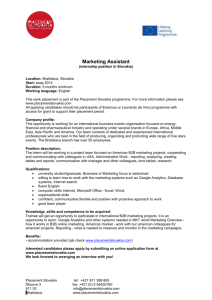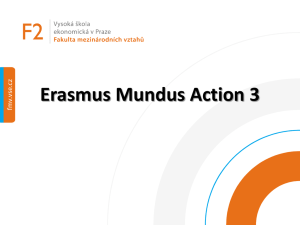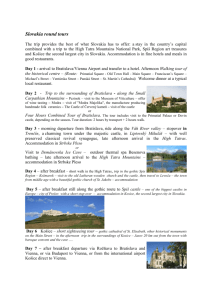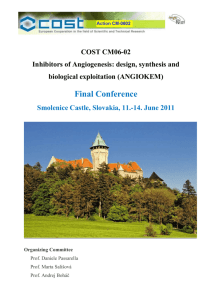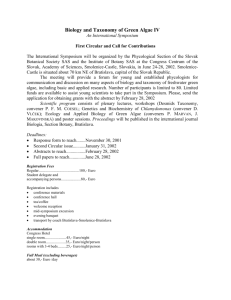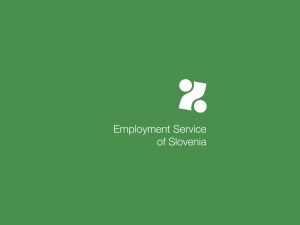Learning Architecture - E
advertisement
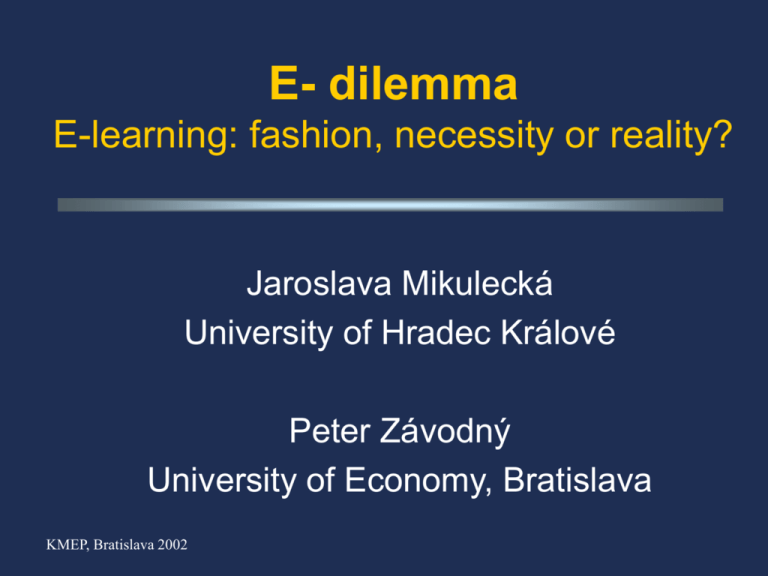
E- dilemma E-learning: fashion, necessity or reality? Jaroslava Mikulecká University of Hradec Králové Peter Závodný University of Economy, Bratislava KMEP, Bratislava 2002 Learning Architecture Design, Sequencing, Integrating, of all electronic and non-electronic components of learning to deliver the optimum improvement in competence and performance of students and teachers. KMEP, Bratislava 2002 2 Why New Learning Architecture? It is not the strongest of the species who survive, nor the most intelligent, but the ones most responsible to change Charles Darwin KMEP, Bratislava 2002 3 New Tools From classroom teaching to e-learning: modern presentation equipment digital cameras digital libraries (as ACM and IEEE digital library - http://www.acm.org ) e-books CD ROMs with CBT KMEP, Bratislava 2002 4 New Tools distance learning management software (e-learning systems as WebCT, LOTUS Learning Space, Blackboard, eDoceo) e-packs (as on http://www.WebCT.com) authoring tools software (as Macromedia Flash or Autorware) web based schedulers and course planners as Syllabus Plus from Scientia KMEP, Bratislava 2002 5 New Methodology Mixed mode: – Limited number of contact hours combined with web-based learning Critical activities: – Feedback – Assessment KMEP, Bratislava 2002 6 Finance: 1500 students, 80 teachers Communication (Cesnet, HK net) 20 000 EUR / Y HW (servers, PC for every teacher) - 40 000 EUR SW (MS Campus Agreement, WebCT Campus Edition, specialised SW) - 17 000 EUR/Y Technical support 4000 EUR/ Y Training of teachers (ECDL, DL methodology, WebCT) Study materials - 3 months sallary 60 000 CZK/Course TOTALLY: 120 000 EUR KMEP, Bratislava 2002 7 Financial Resources - FIM UHK TEMPUS project S-JEP 12339-97: Multimedia and Distance Learning for Teachers. SOCRATES/MINERVA project No. 90683-CP-1-2001-1-CZ: E-DILEMA - E-resources and Distance Learning Management Research stream CEZ: J20/98:184500001 “Knowledge Management for Information Society”, 1999-2003 Research stream CEZ: J20/98:184500002 “ICT in the global education”, 1999-2003 Special funds of the Ministry of Education KMEP, Bratislava 2002 8 Possible way to e-learning using of Application Service Provider sharing of learning objects cooperation among universities/faculties eDILEMA project: e-resources and Distance Learning Management (Socrates/MINERVA Programme) The main goal: DILLEO KMEP, Bratislava 2002 9 Digital Library of Learning Objects Learning Object is any entity, digital or nondigital, that may be used for learning, education or training Metadata for learning object describe relevant characteristics of the learning object DL – controlled set of digital information objects – special type of information system fulfilling the role of library KMEP, Bratislava 2002 10 DL is not … web – is not controlled multimedia database – does not provide library services on-line information resource – need not to be on-line KMEP, Bratislava 2002 11 Metadata Standardisation IMS - has produced a wide range of specifications for learning technologies; recently Digital Repositories White Paper http://www.imsglobal.org Dublin Core – developing a widely used resource discovery specifications http://www.purl.org/dc ARIADNE – developing concepts and tools for e-learning with a strong emphasis on the sharing and reuse of e-resources http://www.ariadne-eu.org/main.html KMEP, Bratislava 2002 12 Metadata for our DILLEO 1. 2. 3. 4. 5. 6. general information on the resource itself semantics of the resource pedagogical attributes technical characteristics conditions for use meta-meta data KMEP, Bratislava 2002 13 DILLEO - physical view Client DB server KMEP, Bratislava 2002 Client Application server 14 DILLEO – logical view User DHTML & JavaScript Web browser ASP .NET Web server (IIS) Application objects Stored procedures Database server Object files Database KMEP, Bratislava 2002 MS SQL Server 2000 MS Index Server 15 DILLEO – basic functions Fulltext search Selective search dependent on type of object Possibility to view each object Support for metadata creation Evaluation of every learning object Possibility to download the object Different access rights KMEP, Bratislava 2002 16 Motivation for cooperation Competition of distance courses The main aim of the competition is to stimulate cooperation among Czech (and Slovak) universities to motivate development and deployment of online courses to evaluate quality of on-line courses materials to demonstrate on-line teaching methodology, problems and achievements KMEP, Bratislava 2002 17 Evaluation procedure The evaluation procedure has two-steps: 1. The jury grades course materials (1 to 9, the more the better) according to the criteria given in the table below. 2. A workshop is organised where the authors of the best courses demonstrate their products to the jury and to all interested people. KMEP, Bratislava 2002 18 Evaluation Criteria The basic features (35% of all points) – Mesurable and testable course objectives – Intuitiveness of course control – The overall design of the course – Course graphics – Usage of multimedia – Response time of the system – Quality of supplementary materials KMEP, Bratislava 2002 19 Evaluation criteria Motivation of the students (27% of all points) – Discussion groups and whiteboard – Workgroups – Practical examples Planning and organising of learning process (8%) – Support with calendar, vocabulary, index, search possibilities Feedback (30%) – Monitoring of student’s progress – Autotests – Tests, assessments, assignments, exams KMEP, Bratislava 2002 20 Thank you for your attention
